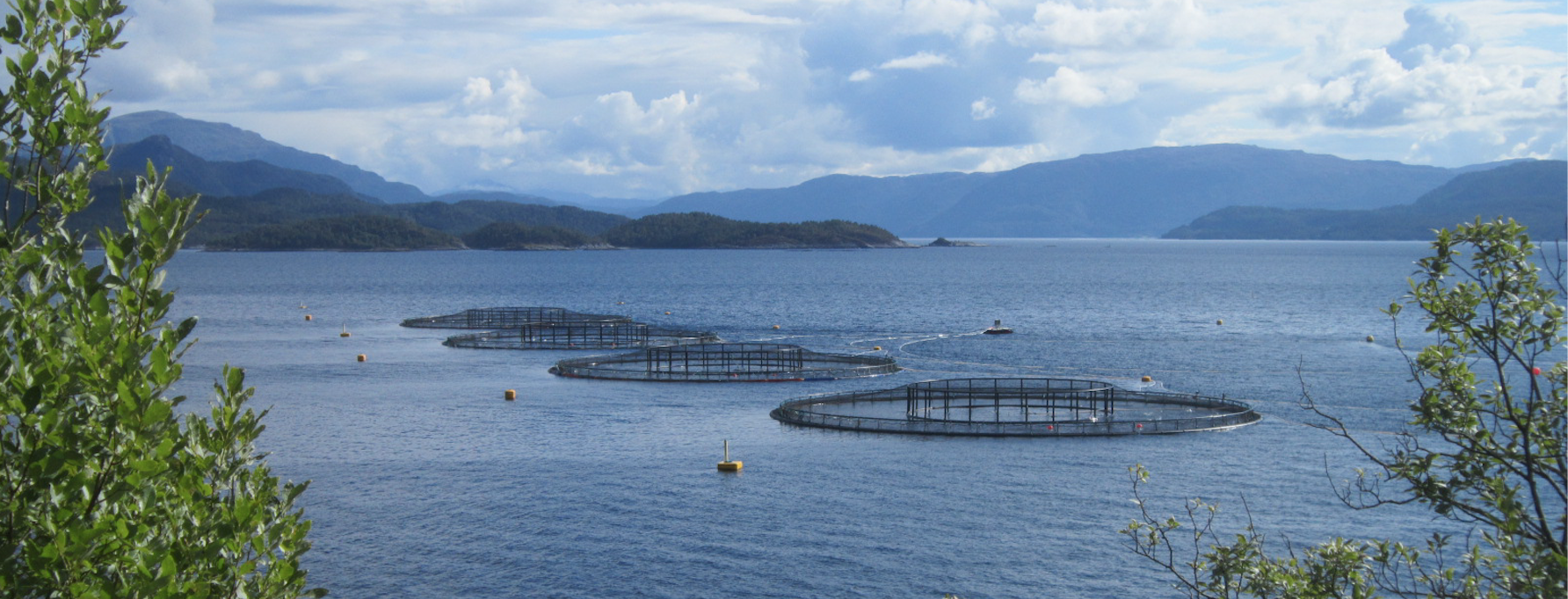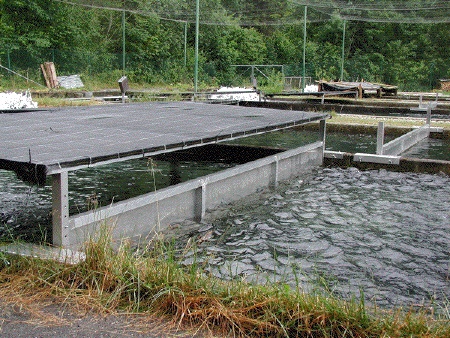
Net cages for fattening salmon in Norway (Photo: Brataffe / Wikimedia)
Years of suffering
The suffering of fish in aquaculture lasts much longer than when caught in the wild: from the first to the last day of life, one to several years depending on the fish species.
Farmed fishes live day after day together with many conspecifics in an artificial, stimulus-free and confined environment in which they can only live out their natural needs and the behavioural patterns of their species to a very limited extent. Even if this deficit "does not hurt" in the sense of pain, it is permanent suffering and frustration.
This is not due to the malice of the fish farmers, but to a lack of verified knowledge about what the fish of a certain species would need apart from food and oxygen. Making this knowledge available is the intention of our database fair-fish database.
